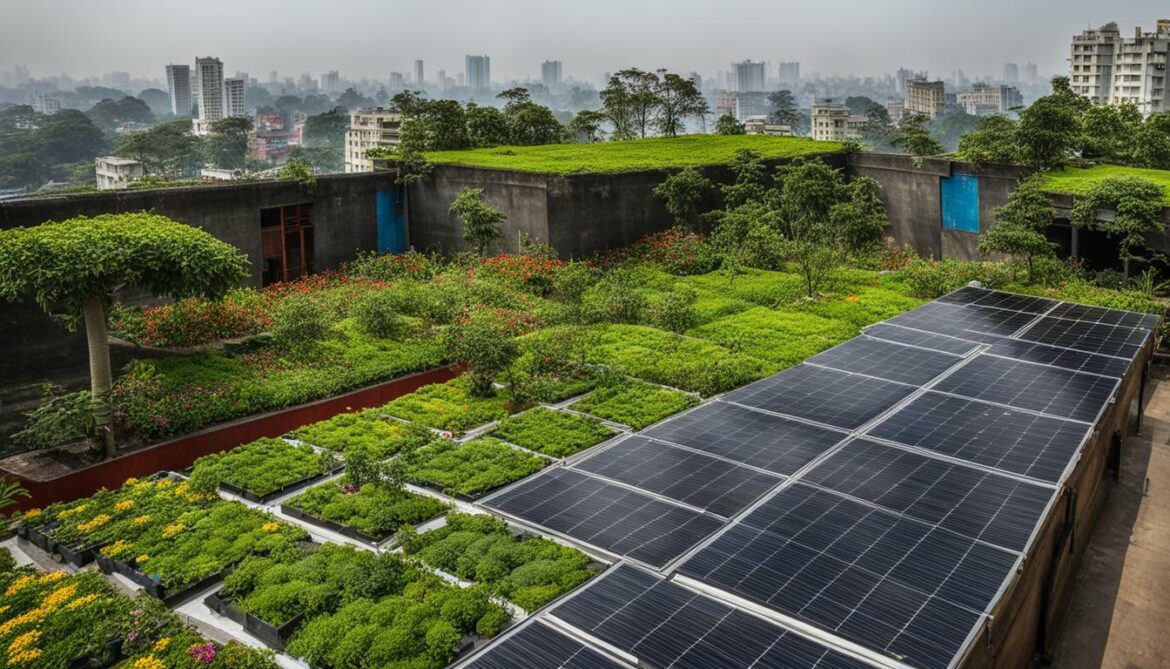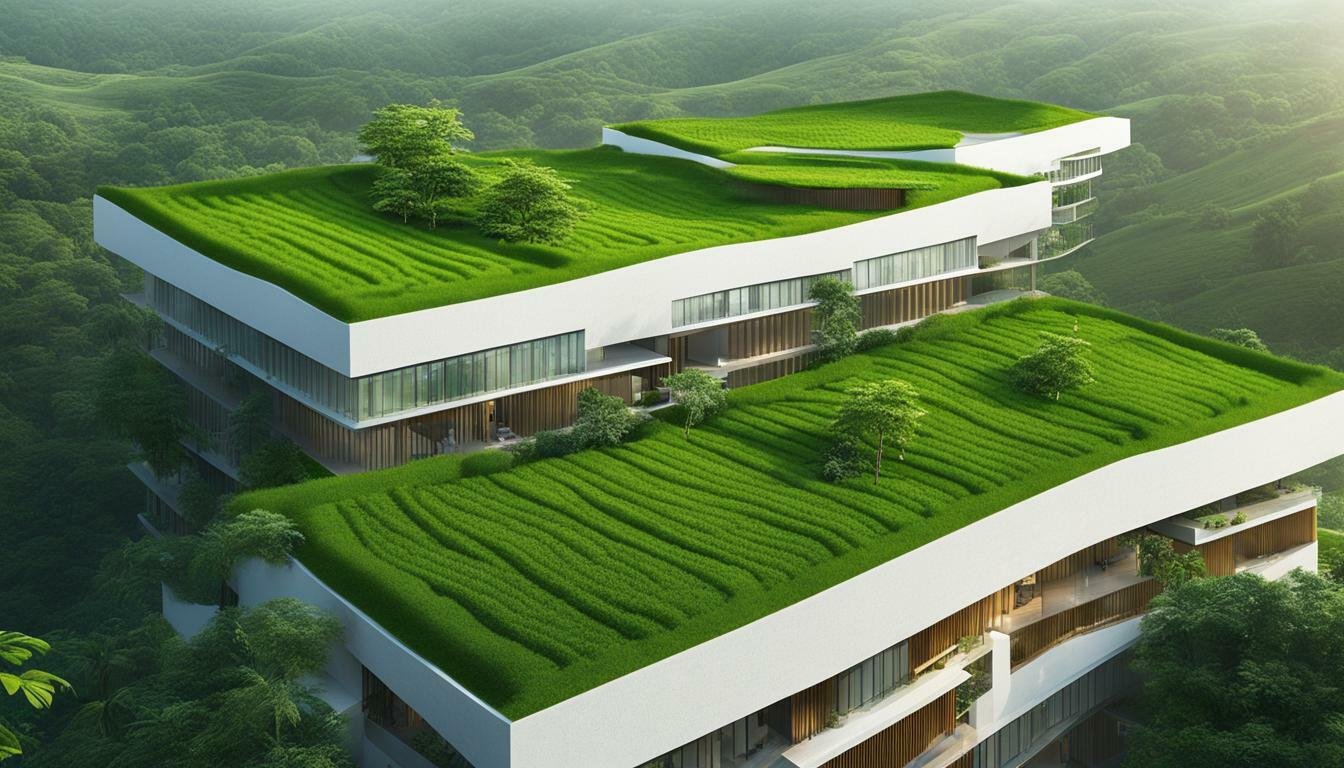Bangladesh has a rich history when it comes to green building practices. Over the years, the country has witnessed significant developments in sustainable construction methods and techniques.
The history of green building in Bangladesh dates back to the early 2000s when the concept of sustainable development started gaining recognition worldwide. As a developing country with a growing population and urbanization, Bangladesh faced various environmental challenges, including rapid deforestation, air and water pollution, and high energy consumption.
One of the earliest instances of green building in Bangladesh can be traced back to the rural areas where traditional buildings have long been constructed with locally available materials such as bamboo, mud, and thatch. These eco-friendly materials allow for natural ventilation and insulation, keeping the indoor environment cool during hot summers.
In recent years, the concept of green building has gained further traction in urban areas, especially in the capital city of Dhaka. Several initiatives and projects have sought to integrate sustainable design principles and technologies into modern construction practices.
One notable example is the SURE House, a sustainable urban residence and office building located in Dhaka. The building incorporates various green features such as solar panels, rainwater harvesting systems, and energy-efficient appliances. It demonstrates the potential for low-carbon housing solutions that reduce environmental impact and promote energy conservation.
Furthermore, the Bangladesh Green Building Council (BGBC) plays a pivotal role in promoting green building practices across the country. The council offers certification and training programs to encourage architects, builders, and developers to adopt sustainable construction practices. Their efforts have helped raise awareness about the importance of green building and its potential to mitigate climate change.
Key Takeaways
- The history of green building in Bangladesh dates back to the early 2000s.
- Traditional rural buildings in Bangladesh have long been constructed with eco-friendly materials.
- The SURE House is an example of a sustainable urban building in Dhaka with green features.
- The Bangladesh Green Building Council (BGBC) plays a significant role in promoting green building practices in the country.
Establishment of the Bangladesh Green Building Council
One of the earliest and most significant milestones in the history of green building in Bangladesh was the establishment of the Bangladesh Green Building Council (BgBC) in 2009. The Council was formed with the objective of promoting sustainable practices in the country’s construction industry.
The BgBC focuses on creating awareness about green building practices and their benefits, such as energy and water efficiency, reduced carbon emissions, and improved indoor air quality. It serves as a platform for knowledge-sharing among industry professionals, government agencies, and the public to promote the adoption of sustainable design and construction methods.
One of the key goals of the BgBC is to develop and implement green building rating systems and certification programs. These systems will provide a framework for evaluating the sustainability performance of buildings in Bangladesh and will encourage the industry to incorporate environmentally friendly practices. Additionally, the Council provides training and education programs to promote the adoption of green building practices.
The BgBC collaborates with various stakeholders, including architects, engineers, developers, and government agencies, to achieve its objectives. It also engages with international organizations and networks to stay updated on global best practices in green building.
The establishment of the BgBC has been instrumental in driving the adoption of green building practices in Bangladesh. Its efforts have gained recognition both domestically and internationally, receiving support from government bodies and international organizations. In summary, the BgBC has played a vital role in promoting sustainable development in the construction sector of Bangladesh.

Notable Green Building Projects in Bangladesh
Several notable green building projects have been implemented in Bangladesh over the years, showcasing the country’s commitment to sustainability and the use of innovative construction techniques. One such project is the Grameen Bank Housing Project, which was developed in the early 1980s to provide affordable and sustainable housing solutions to low-income families. The project utilized sustainable construction techniques, such as locally sourced materials and passive cooling strategies to reduce energy consumption.
Another remarkable project is the ACI Centre in Dhaka, which is Bangladesh’s first LEED Platinum-rated office building. The building boasts several energy-efficient features such as rooftop solar panels, rainwater harvesting systems, and a green roof. The Bashundhara City Complex, which is the largest shopping mall in South Asia, achieved the LEED certificate for its energy-saving measures. The mall features a range of sustainable design elements, including energy-efficient lighting and HVAC systems.
Additionally, the East West University Campus in Dhaka is a notable green building project, featuring a solar PV system, energy-efficient lighting, and rainwater harvesting infrastructure. The university campus has received multiple awards for its sustainability efforts and serves as a model for sustainable construction practices in Bangladesh.
These green building initiatives in Bangladesh highlight the country’s commitment to sustainable development and environmental conservation. Through the use of sustainable construction practices, such as the use of renewable resources, waste management, and energy efficiency, Bangladesh is moving towards a greener future.

Introduction of the Bangladesh National Building Code
Another significant development in the history of green building in Bangladesh is the introduction of the Bangladesh National Building Code (BNBC) in 2012. The BNBC is a comprehensive set of guidelines and regulations that govern the construction and maintenance of buildings in Bangladesh. Its aim is to ensure the safety, durability, and sustainability of structures in the country.
The BNBC was first introduced in 1993, with subsequent updates and revisions made over the years to address emerging challenges and incorporate new technologies and building practices. It serves as a vital tool for architects, engineers, contractors, and other professionals involved in the construction industry to ensure that buildings are constructed in compliance with set standards.
The code covers various aspects of building design, construction materials, structural design and integrity, fire safety, electrical and plumbing installations, sanitation facilities, accessibility, energy efficiency, and disaster resilience. It provides guidelines and specifications for different types of buildings, including residential, commercial, industrial, educational, and healthcare facilities.
The introduction of the BNBC has played a crucial role in improving the quality of construction in Bangladesh. It has helped reduce the risks associated with substandard construction practices, which were prevalent in the past. By enforcing the code, building authorities can now ensure that buildings are safe and suitable for habitation.
The BNBC has also contributed to enhancing the resilience of buildings to natural disasters, such as earthquakes, floods, and cyclones, which are common in Bangladesh. The code incorporates provisions for structural stability and disaster-resistant design principles, enabling buildings to withstand the forces exerted by such events.
In addition to its role in ensuring safety and resilience, the BNBC also promotes sustainable construction practices. The code addresses issues such as energy efficiency, water conservation, and waste management, encouraging the use of eco-friendly and resource-efficient building materials and technologies.
The introduction of the Bangladesh National Building Code has had a significant impact on the construction industry in the country. It has not only improved the safety and durability of buildings but has also raised the standards of construction practices. The code continues to evolve, keeping pace with advancements in technology and addressing emerging challenges, to ensure that buildings in Bangladesh are built to the highest standards.

Future Outlook and Benefits of Green Building in Bangladesh
In recent years, green building practices have become more prevalent in Bangladesh, driven by various factors, including government initiatives, international collaborations, and growing awareness among stakeholders. The future outlook for green building in Bangladesh is promising, with numerous benefits for the environment and the economy.
One of the primary benefits of green building in Bangladesh is its positive impact on the environment. Green buildings are designed to have minimal energy consumption, reduce water usage, and promote the use of renewable resources. This leads to a significant reduction in greenhouse gas emissions and helps combat climate change. Additionally, green buildings use sustainable building materials that are often recycled or sourced locally, reducing the environmental impact of construction.
Another advantage of green building in Bangladesh is its potential for economic growth. As the construction industry embraces sustainable practices, it creates new job opportunities and stimulates economic development. Green buildings are more energy-efficient, resulting in reduced utility costs for residents and businesses. Moreover, the demand for green buildings is increasing globally, presenting opportunities for Bangladeshi companies to export their sustainable building expertise.
The government of Bangladesh has recognized the importance of green building and has implemented various policies and initiatives to promote its adoption. The Bangladesh Green Building Council (BGBC) was established in 2009 to foster the development of green buildings in the country. The BGBC provides certifications and training programs, raising awareness about the benefits of green building and encouraging industry professionals to adopt sustainable practices.
In recent years, several notable green building projects have emerged in Bangladesh. For example, the Bashundhara City Complex in Dhaka is one of the largest green buildings in South Asia. The complex incorporates solar panels, rainwater harvesting systems, and energy-efficient lighting to reduce its environmental footprint.
Despite the progress made, there are challenges to overcome in expanding the use of green building practices in Bangladesh. Limited awareness and knowledge about green building among the general public and industry professionals can hinder its widespread adoption. Additionally, the initial cost of green building construction can be higher compared to traditional buildings, although the long-term energy and cost savings offset this investment.
Overall, the future outlook for green building in Bangladesh is promising, with numerous benefits for the environment and the economy. As the country continues to prioritize sustainability, the adoption of green building practices will help mitigate climate change, create new job opportunities, and position Bangladesh as a leader in the global green building industry.

Conclusion
In conclusion, the history of green building in Bangladesh has evolved over the years, driven by the country’s need for sustainable development and environmental conservation. The establishment of the Bangladesh Green Building Council and the introduction of the Bangladesh National Building Code have played a significant role in promoting sustainable construction practices in the country.
Notable green building projects such as the Grameen Bank Housing Project have showcased the innovative use of sustainable construction techniques, including passive cooling strategies and rainwater harvesting systems, as well as the use of locally sourced materials.
The future of green building in Bangladesh looks promising, with government initiatives and international collaborations aimed at promoting green building practices. Adopting sustainable practices in the construction sector can lead to numerous environmental and economic benefits, such as reduced energy consumption and lower water usage, as well as improved indoor air quality and reduced carbon emissions.
Overall, the adoption of green building practices in Bangladesh is essential in addressing the challenges of climate change and ensuring sustainable development in the country. The construction sector has a crucial role to play in this, and the progress made so far in promoting sustainable construction practices is encouraging.
FAQ
Q: What is the history of green building in Bangladesh?
A: The history of green building in Bangladesh dates back to the early 2000s when the concept of sustainable development started gaining recognition worldwide. Bangladesh faced various environmental challenges, including deforestation and high energy consumption, leading to the exploration of green building practices as a means to mitigate these issues.
Q: When was the Bangladesh Green Building Council established?
A: The Bangladesh Green Building Council (BGBC) was established in 2009. It is a non-profit organization that promotes green building practices and aims to transform the built environment of Bangladesh into a more sustainable and energy-efficient one.
Q: What are the Green Building Certification Systems?
A: The Green Building Certification Systems (GBCS) are a set of guidelines and rating systems developed by the BGBC to evaluate and certify the environmental performance of buildings in Bangladesh. They cover aspects such as energy efficiency, water conservation, materials selection, indoor environmental quality, and site selection.
Q: Can you give an example of a notable green building project in Bangladesh?
A: One notable green building project in Bangladesh is the Grameen Bank Housing Project, initiated by Nobel Laureate Muhammad Yunus and architect Anna Heringer. It aimed to provide affordable and environmentally friendly housing solutions to the rural poor, utilizing sustainable construction techniques and locally sourced materials.
Q: What is the Bangladesh National Building Code?
A: The Bangladesh National Building Code (BNBC) is a set of provisions and guidelines introduced in 2012. It makes it mandatory for all future buildings in Bangladesh to comply with green building standards, emphasizing energy efficiency, waste management, and the use of renewable resources.
Q: What are the benefits of green building in Bangladesh?
A: Green buildings in Bangladesh have demonstrated reduced energy consumption, lower water usage, improved indoor air quality, and reduced carbon emissions. They also have the potential to lower operating costs and result in long-term savings through reduced utility bills.






















Post comments (1)